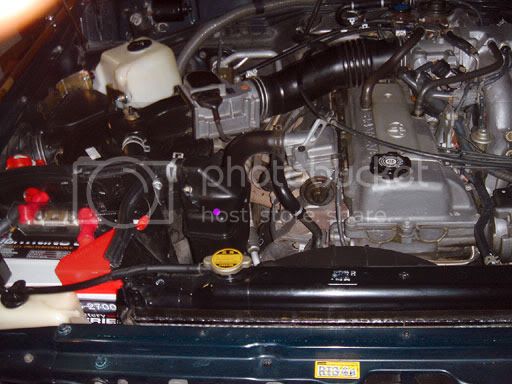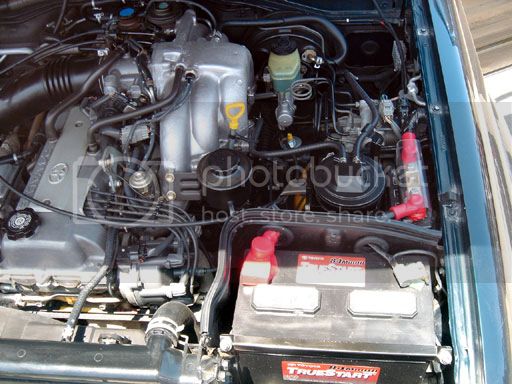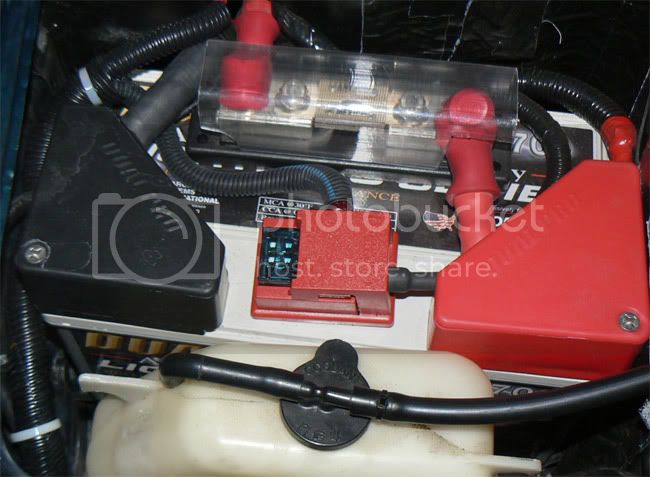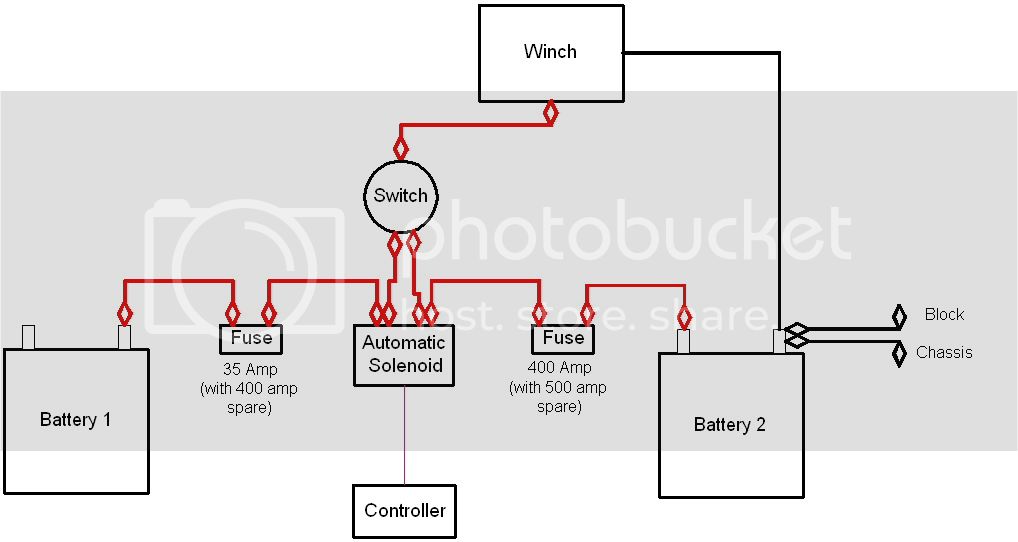I think this is a bit different from the other dual battery setups I’ve seen, so I thought I’d post it up for reference. Sorry about the lame pictures. I think I got some water in my camera. I’ll replace them when I get a new camera.
Step 1 – Clear some space
I used the Slee kit to move the windshield reservoir.
I’ve got a 94, which means I had a resonator/silencer in the area where the second battery needs to go. I think most people just remove it and replace it with a straight hose, but I didn’t want to change the sound of the truck.
I did this (purple dot):

I made the modified resonator out of two resonators. I cut off the top opening of the old one, cut and sanded to shape, used four screws to get a nice solid connection, and then used JB weld to make it airtight. Then I bent a bit of metal, and cut and shaped some hose. It wasn’t much extra effort and I didn’t have pull anything off my truck.

Step 1 – Clear some space
I used the Slee kit to move the windshield reservoir.
I’ve got a 94, which means I had a resonator/silencer in the area where the second battery needs to go. I think most people just remove it and replace it with a straight hose, but I didn’t want to change the sound of the truck.
I did this (purple dot):

I made the modified resonator out of two resonators. I cut off the top opening of the old one, cut and sanded to shape, used four screws to get a nice solid connection, and then used JB weld to make it airtight. Then I bent a bit of metal, and cut and shaped some hose. It wasn’t much extra effort and I didn’t have pull anything off my truck.

Last edited:







